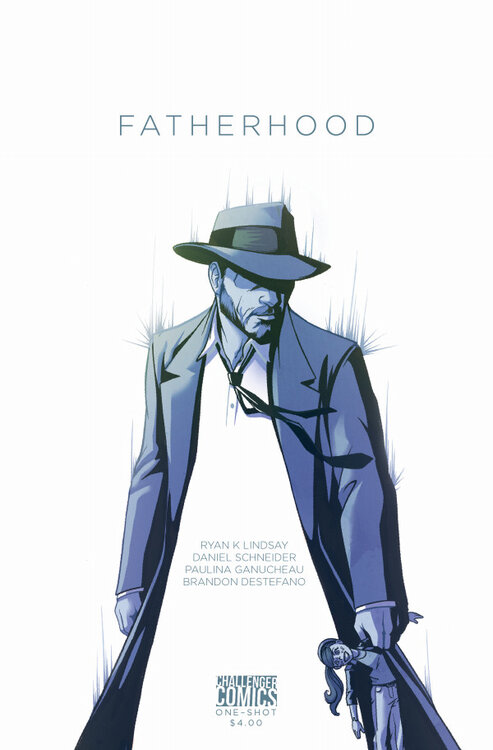Part 1: Ryan Lindsay’s Fatherhood #1 (a one-shot)
Last month, NerdSpan featured an interview with indie creator, Jeremy Holt and a review of his creator-owned comics, Cobble Hill. This month features a triple threat of three mini-reviews of comics from Challenger Comics—another independent comics imprint headed by Ryan Ferrier. As stated on their website, Challenger is not just another independent publisher: “Challenger Comics is not a publisher. The creator is the publisher. Challenger is merely an imprint, much like a brother/sisterhood that’s always there to toot your horn.” Ferrier also points out that “I want to make comics on my own and put them online for people to read and (hopefully) buy, and I want a good-looking, easy way other than tumblr, etc. to host them. So I made Challenger. And I’ve invited some friends and creators to join the party too.”

A quick look at their catalog of comic provides readers with a bevy of heavy-hitting, polished comics. This month’s “Going Indie” is going to focus on sampling some of these titles with a new review being published every day until Emerald City Comic Con—where all three of these titles can be found at the Challenger Comics booth along with the creators for each comic.
Now, onto the reviews!
Fatherhood #1 (a one-shot)
Written by Ryan K. Lindsay
Art by Daniel Schneider
Colors by Paulina Ganucheau
Letters by Brandon DeStafano
Designs by Christopher Kosek
Published by Challenger Comics
It’s a common story: boy meets girl, boy and girl fall in love, and boy and girl get married and start a family. Sadly, it is also a common story for boy and girl to go their separate ways leaving families broken. It is not so common to see this family drama take a Noir-esque turn; yet, that is exactly what happens in Ryan K. Lindsay’s Fatherhood—a one shot issue from Challenger Comics. Make no mistake: This book is not aiming to tell an uplifting tale of being a parent; instead, it takes aim at daring readers to question how far they would go to be with their child.
The story starts as the male protagonist and his wife separate, and it is clear the divorce leaves him destitute—unemployed, unfulfilled, and alone. The one opportunity he finds to reconnect to his old life is through acquiring a doll that his daughter wants; unfortunately, it’s the same doll that every other girl wants and whose parents are desperately fighting to bring home. It is at this point in the story that the curtain comes down and the mood and tone take a decidedly downward shift. The inks and coloring become darker and heavier as the emotions of sadness and loneliness give way to a sort of stoic abandonment and resignation. Even the voice and narration change as the reader descends from the omniscient view into the mind of the narrator.
I won’t spoil the story, but I will say this: After reading Fatherhood, set it down and come back to it a day later for a second reading. I don’t think Lindsay is looking for readers to fully identify with and necessarily “like” his protagonist; however, I do believe he invites readers to stare down the rabbit hole and ask themselves: “How far would you go?” For many of us, it would not be that far, but for others… it’s clearly a long way down to rock bottom.
Stay tuned for Part 2 of “Going Indie: A Triple Threat from Challenger Comics” featuring a review of Paul Allor’s Orc Girl tomorrow!






